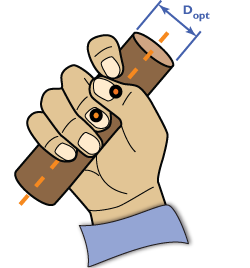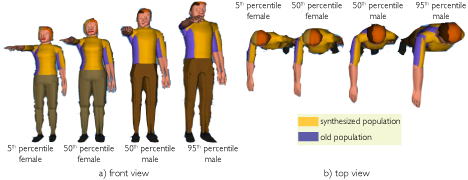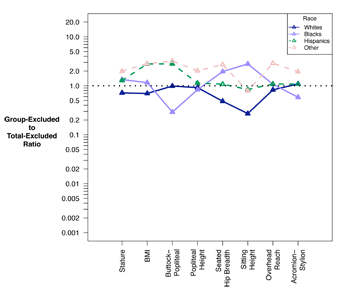
by mbp11 | Aug 30, 2009 | Publications
One goal of Designing for Human Variability (DfHV) is to optimize the interaction between user and device. Often, this interaction is dictated by the spatial dimensions or shape of the artifacts with which people interact. A novel approach that applies DfHV principles...

by mbp11 | Jun 9, 2009 | Publications
Digital Human Models are used extensively in virtual manufacturing to evaluate hand clearance and reach. Spatial assessments of accommodation are typically conducted using digital human models representative of the manufacturing population. Unfortunately, these models...

by mbp11 | May 9, 2009 | Publications
When designing a product to interact with the human body, designers consider the sizes and shapes of people. A population’s variability in body size and shape can be accounted for in many ways, such as offering products in multiple sizes or including...

by mbp11 | May 9, 2009 | Publications
Designing for human variability frequently necessitates an estimation of the spatial requirements of the intended user population. These measures are often obtained from “proportionality constants” which predict the lengths of relevant anthropometry using...

by mbp11 | May 9, 2009 | Publications
The overall goal of preference modeling methodologies in the field of designing for human variability (DfHV) is to accommodate (i.e., satisfy the safety and comfort requirements of) the desired percentage of the target user population while concurrently ensuring...





